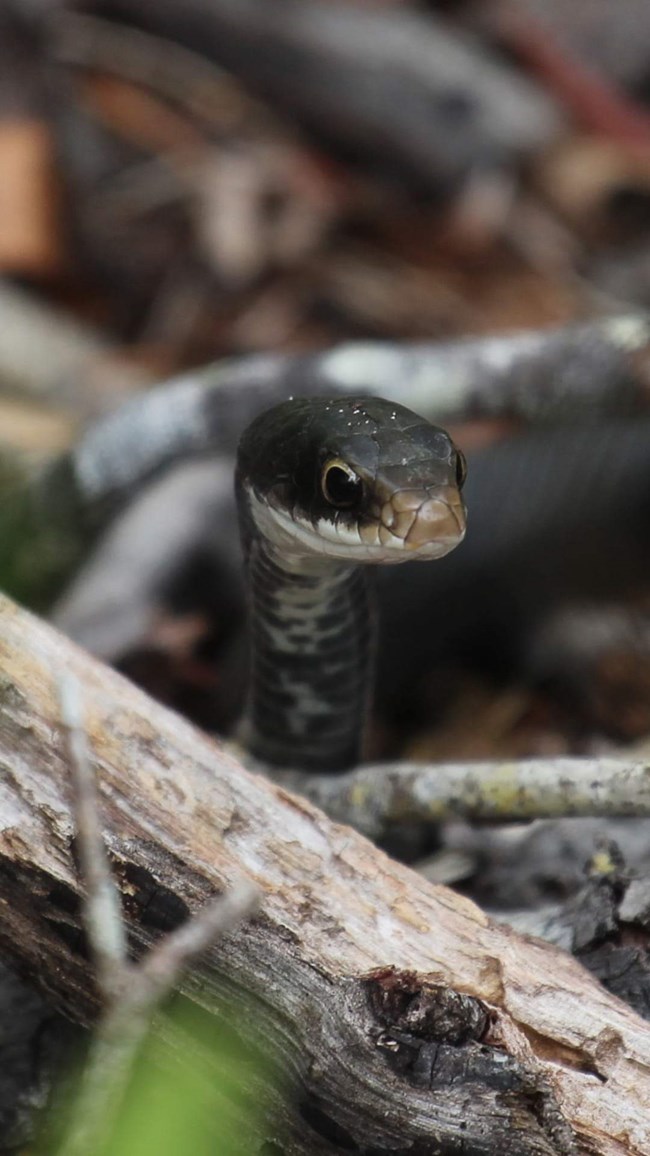
NPS Black racers are found throughout Florida and will often inhabit brush-covered or cutover areas near water. Our waterways provide the perfect environment for this species to feast on frogs, rodents, birds, and lizards. Black racers hunt using their sight by crawling with their head raised off the ground to look for prey. This species is diurnal, meaning that they will hunt during the daytime. How did it get the name racer? Because they are FAST! The easiest way to distinguish a black racer from other similar species like rat snakes, king snakes, and hognose snakes is whether the snake freezes when approached or if it races away. While black racers tend to slither away and avoid humans, they will strike if cornered. Black racers lay clutches of up to 36 eggs in the early summer which will hatch roughly 60 days later. Young black racers look much different than adults, with tan to grayish coloring and reddish-brown blotches down their back. They tend to have larger eyes than most other snakes and will gain their adult coloring after they are around 12 inches in length. Although black racers are frequently found throughout the state, they still face threats from human development and interactions. This snake is fast, but not fast enough to outrace a car. Vehicle collisions are one way that humans impact this species and intentional killings out of fear is another. Black racers can resemble another snake, the venomous water moccasin. People who mistake black racers with their venomous cousin may not think twice to confirm whether the species is harmful or not before taking extreme action! If you come across a snake in the wild and are not sure what species it is, the best course of action is to leave it alone! |
Last updated: June 11, 2021
